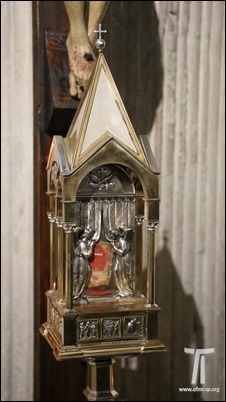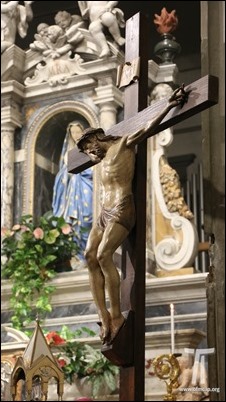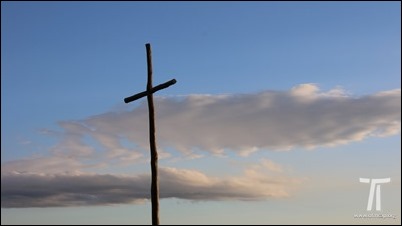Hello and welcome!
Obviously, we are all very concerned about the future of DACA — the concessions that were made for the nearly 800,000 children and young people who arrived in this country without the benefit of correct documentation. The program gave them a temporary legal status, allowing them to work and study.
The President’s recent decision to end this program in six months has made it urgent that Congress act so that so many of these young people’s lives — and the lives of their families — will not be completely disrupted.
To this end, earlier this week, the four bishops of Massachusetts issued the following statement urging Congress to rectify this situation and to make these concessions permanent in law:
They are known as “Dreamers”. However, their dreams have fast become a nightmare. Last week President Trump terminated the Deferred Action for Childhood Arrivals (DACA) program established five years ago by the Obama Administration. The President’s decision puts at risk, for deportation, the lives of approximately 19,000 Massachusetts residents and another 780,000 individuals across the country. Each of these young individuals faces a traumatic and frightening future.
The DACA program has clearly been successful since its inception in 2012. It has given young undocumented children an opportunity to enjoy the freedoms of America that we, as a society, too often take for granted. They are able to thrive in the classroom, play in our parks, volunteer for the needy and ultimately grow and mature as young adults.
These children and young adults are innocent of any wrongdoing. They should not be punished for living in the United States of America. They have no other country to call home. They are our current students. They are our high school and college graduates. They are service workers and professionals. They are productive members of our society. In short, they are supporting themselves and their families and have become an integral part of the melting pot we call America.
Today, there remains hope that the protections provided by DACA can be saved. In apparent recognition of the chaos that the elimination of the program will cause, President Trump has given the United States Congress six months to pass a Bill and work with his Administration to ultimately codify many of the DACA protections into law. Congress cannot be silent on this issue. Congress must act now.
The American spirit is resilient and alive. Consider how many citizens, young and old, rich and poor, have come together recently in heroic efforts to aid millions of our fellow Americans in the southern states as they face the toll of dealing with catastrophic natural disasters.
In that same American spirit, we, the four Catholic Bishops of the Commonwealth of Massachusetts, urge Congress to also come together, to support the dreamers in their time of need, not to abandon them resulting in irreparable harm to thousands of families. Members of Congress must put political differences aside and work on a bi-partisan effort to re-establish those protections for so many that have been eliminated thus renewing their American dream.
This week I have been in Rome for meetings of the C9 Council of Cardinals advising the Holy Father on the reform of the Roman Curia and for activities of the Pontifical Commission for the Protection of Minors.
I arrived last Thursday, and on Friday, we made a presentation on behalf of the Commission to a group of about 150 new bishops from around the world who have been ordained in the past year. They were in Rome for the two-week seminar to help prepare them for their ministry as bishops. The group included some 20 new bishops from the United States, as well as large delegations from Italy and Brazil.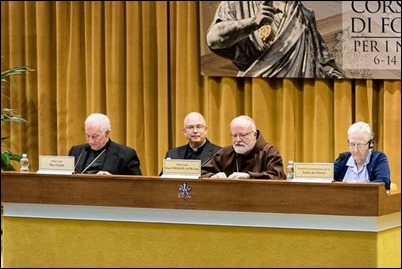
I gave them a conference, as the president of the commission, on the very important subject of child protection. I was accompanied by one of our founding members, Marie Collins, who is no longer a member of the commission but continues to help me with the programs of education for Church leadership, as well as the Commission’s Secretary, Msgr. Bob Oliver. We had about a two-hour session, and even after that, many of the bishops approached us with questions. I was very happy to see the bishops so engaged on this crucial topic.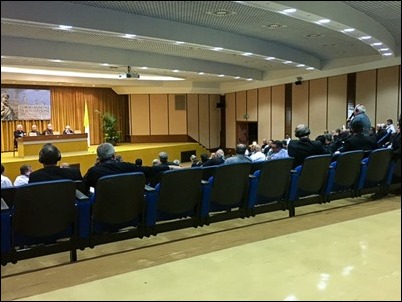
Sunday, I went to the Villa Stritch to attend a cookout that was held for the new American bishops.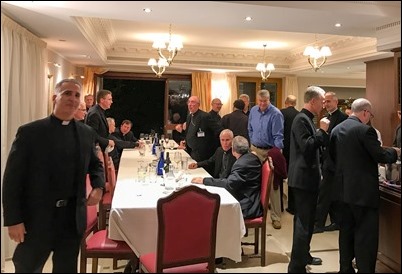
Villa Stritch is a residence that the U.S. Bishops’ Conference maintains in Rome for priests who are working in the Roman Curia.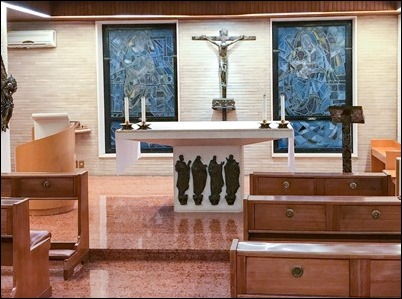
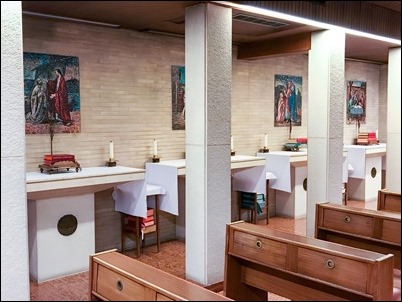
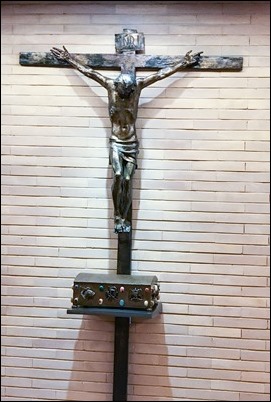
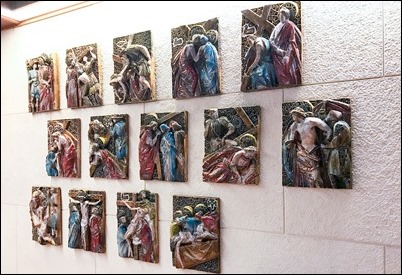
It is a wonderful service that allows priests who are working in the Vatican to assist the Holy Father’s ministry to have a community where they can live together. It’s been a great blessing for the priests who have been able to live there. Currently, we have two Boston priests in residence there – Msgr. Bob Oliver and Msgr. John Abruzzese.
Monday, we began our meetings of the C9 Council of Cardinals. We began without the Holy Father because he was arriving that day from Colombia, where he had just concluded his very successful Apostolic Visit to that country.
He was very warmly received, and he was able to speak to the Colombian people about the need for reconciliation and peace. In Colombia, they have been experiencing a virtual civil war for 50 years, which has cost nearly half-a-million lives and caused the Colombian people to suffer greatly.
The Holy Father’s visit generated great enthusiasm – millions turned out to see him, and attend Mass and to pray with him. Everywhere he went, there were huge crowds of people present to greet him.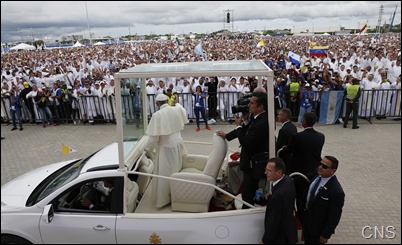
Of course, as many of us saw in the news, at one point these crowds caused the Pope Mobile to stop quickly because people were running in front of the vehicle, which caused the Holy Father to fall. He got a black eye and cut himself, but it was nothing serious. They immediately gave him a bandage and a clean cassock to wear, and the Holy Father marshaled on to continue his program of events.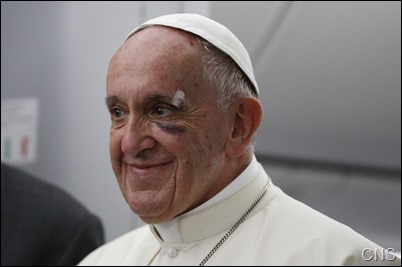
Once the Holy Father returned, we continued our meetings with him on Tuesday and Wednesday.
On Tuesday, we paused from our activities to attend the funeral of Cardinal Velasio de Paolis, who was President Emeritus of the Vatican’ Prefecture for the Economic Affairs and had served as Pontifical Delegate for the Legionaries of Christ.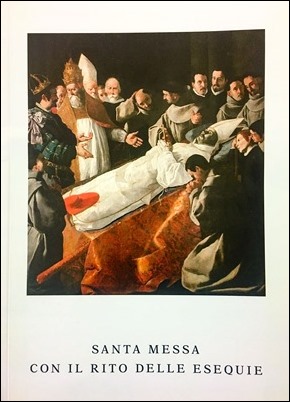
The Mass, which was celebrated in St. Peter’s Basilica at the Altar of the Chair of St. Peter, was attended by all the cardinals who were present in Rome at the time, along with his family and friends.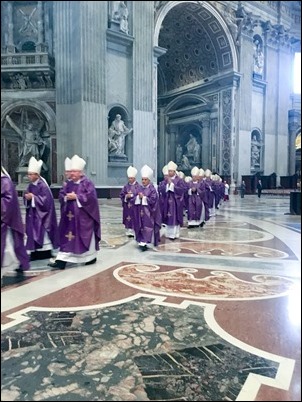
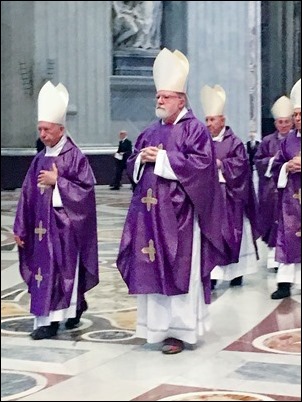
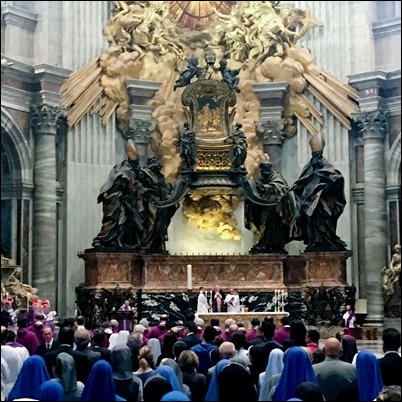
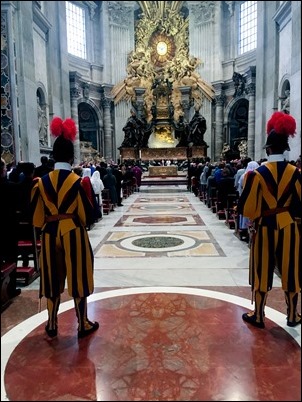
Tuesday evening, we went for a walk after dinner that took us over the Ponte Sant’Angelo (sometimes called the “Bridge of the Angels”), which is one of my favorite places in Rome. The bridge spans the Tiber leading to Castel Sant’Angelo and is lined by statues of angels carrying the symbols of the Passion and Suffering of Christ —the nails, the whip, the pillar, the lance that pierced his side and, of course, the cross itself.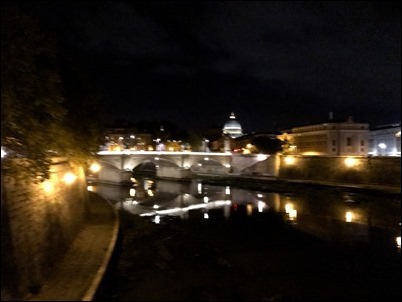
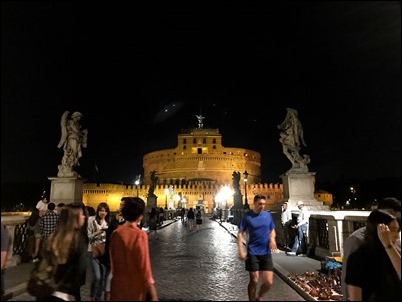
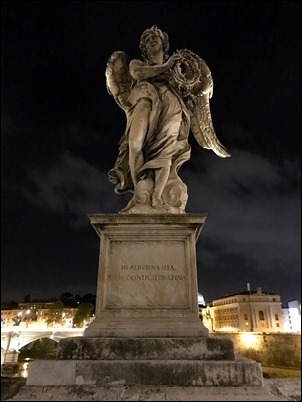
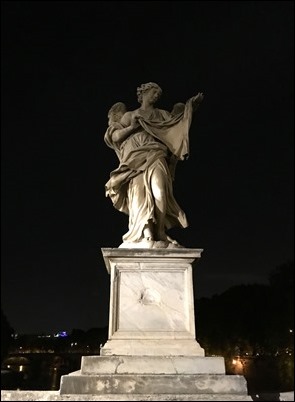
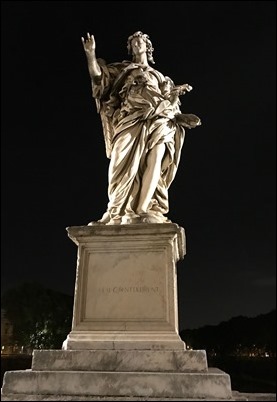
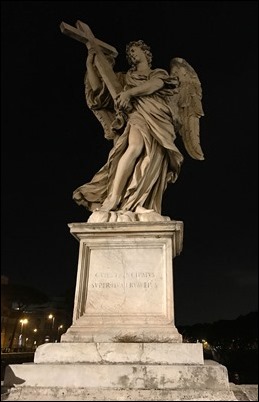
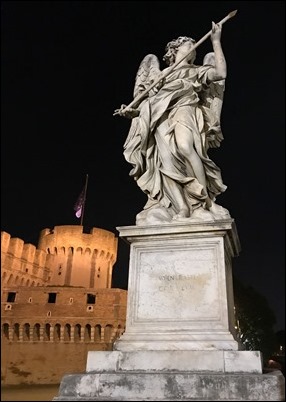
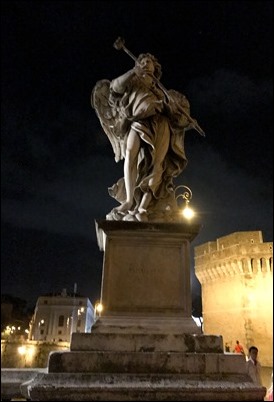
It’s just a wonderful sight, and I always look forward to a chance to see it.
Wednesday night, after concluding our time with the Holy Father, I traveled to Assisi for a meeting of the Capuchin bishops from throughout the world that was called by our Father General. We met at the retreat house that the Capuchin order has in Assisi.
This is a picture of the Chapel in the house and, as you can see, it is beautifully decorated with the mosaics of Father Rupnik, who has decorated so many chapels and churches for the Capuchins.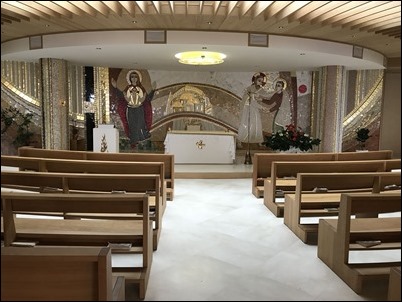
There are about 95 of us Capuchin bishops, and about 60 were able to be present. From North America, there was Bishop John Corriveau from Canada, and myself. (Archbishop Chaput was unable to join us.) There were also a number of bishops from Indonesia and Brazil. (Brazil is perhaps the country with the most Capuchin bishops, I believe there are about 25 serving there.)
During our time together, we were able to hear many accounts of the different bishops’ ministries.
In this photo we see Bishop Paolo Martinelli, Auxiliary Bishop of Milan addressing the bishops.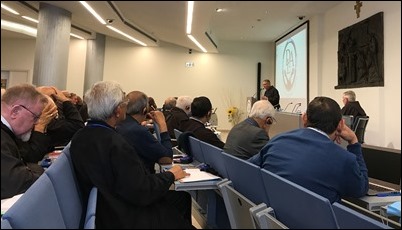
He shared with us his experience of being responsible for all those in consecrated life in Milan, which is such a huge diocese that there are literally thousands of religious there.
Of course, most of our bishops are from mission countries, and many of them are bishops of Apostolic Vicariates. Apostolic Vicariates are in most ways like a diocese, but are in mission areas where a formal diocese has not yet been established. For example, were heard from one of the bishops who is in Ethiopia, where he said he has only three priests in his vicariate. We heard from another bishop in Venezuela whose vicariate serves the indigenous peoples.
Bishop Paul Hinder also spoke to us about his Vicariate of Southern Arabia, which encompasses the United Arab Emirates, Oman, Yemen. Interestingly, his vicariate has a very large Catholic population, though it’s a church entirely of immigrants. I believe there are about 1.5 million Catholics (all foreigners, about half of whom are Filipino) and he only has about 60 priests to serve them.
As you may know, the ministry of the Church there is very restricted. In fact, he said even as bishop, he has to renew his permission to be there every three years. It’s a very challenging situation, but the Church there is thriving.
These meetings with the Father General and my brother bishops are always very life-giving. I’m always very moved to see how many of our Capuchin friars are working in very, very difficult circumstances. For us, that is a joy and privilege to be called upon to take on these difficult posts. Indeed, during our meeting, there was a call from the bishops for the young friars to renew their commitment to these difficult missions.
On Thursday, we went to visit the Sanctuary of La Verna, the place where St. Francis received the stigmata, which is about an hour-and-a-half from Assisi.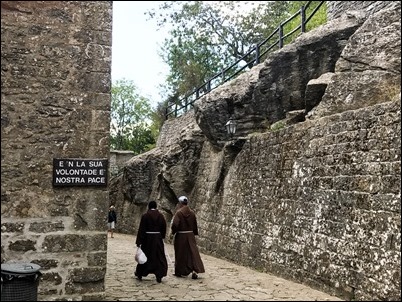
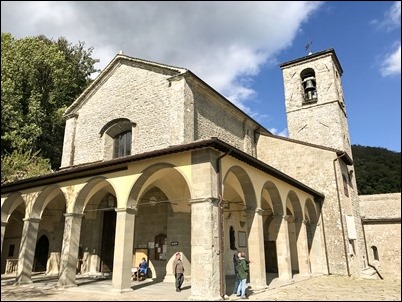
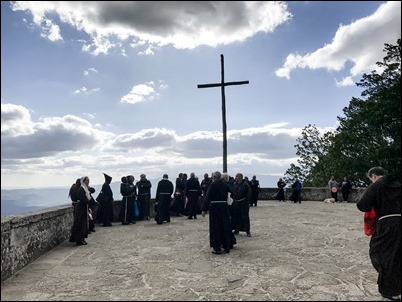
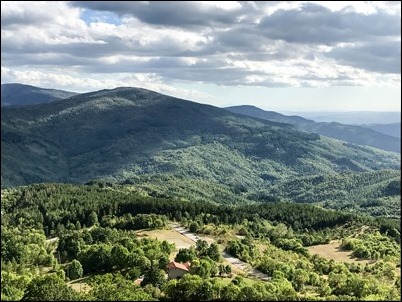
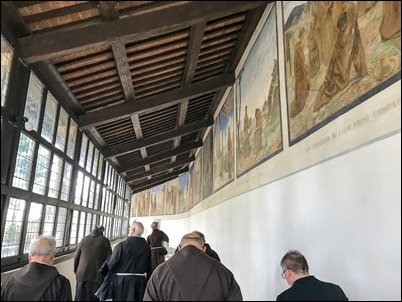
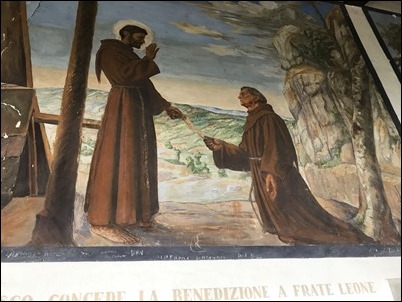
The original church dates back to the 1200s. In the 1500s, Della Robbia decorated many of the chapels there, with an extraordinary collection of his ceramic works.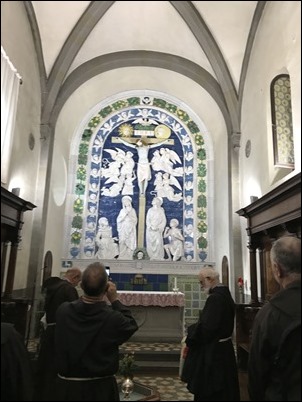
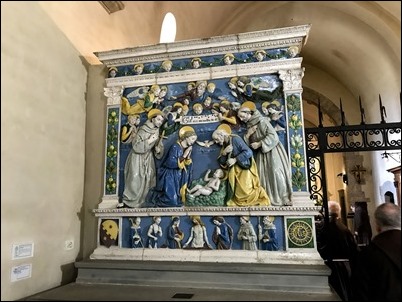
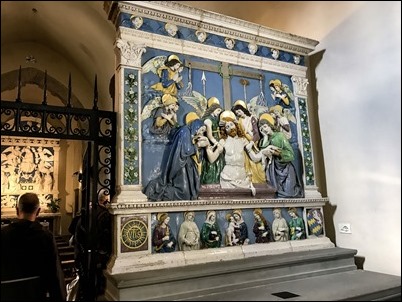
Perhaps some of you had a chance to see the exhibit of Della Robbia’s works last year at the Museum of Fine Arts in Boston. 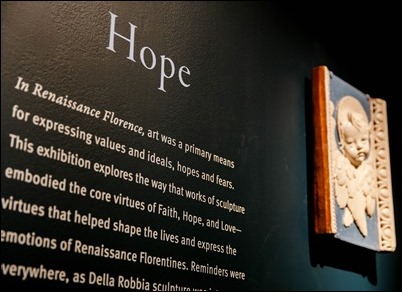
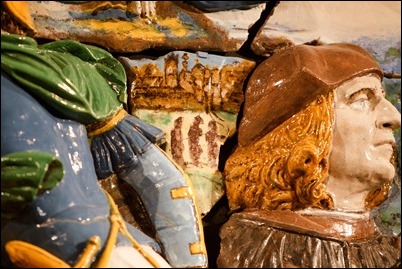
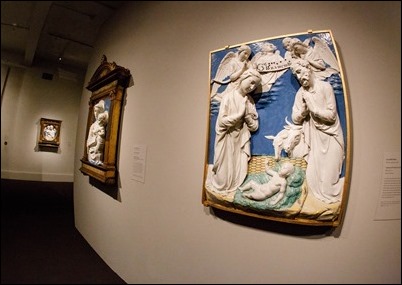
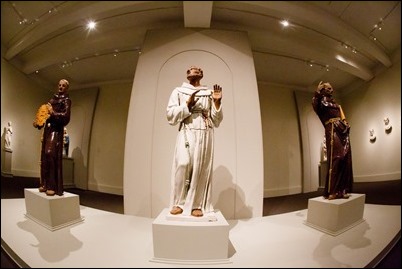
One of the centerpieces of the exhibit was this beautiful life-size sculpture of the Visitation that I admire very much.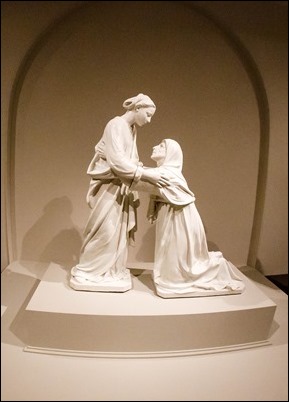
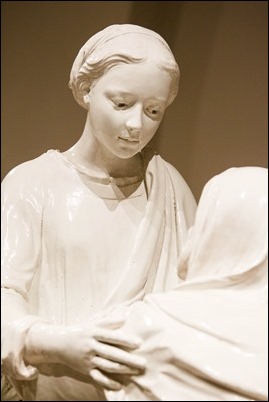
Also there is a bell that St. Bonaventure gave as a gift to the monastery.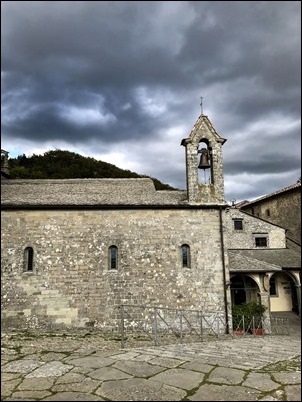
The sanctuary remains a very important place of pilgrimage for many people, and it is a place that is a very important part of our tradition as Capuchins. I made a retreat there only once, over 30 years ago. So, I was very happy to have the opportunity to go back.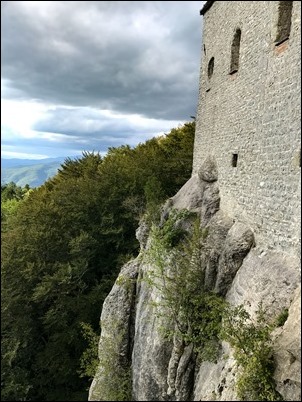
Thursday was, of course, the Feast of the Exaltation of the Holy Cross, which was a wonderful time to be in La Verna because it was around the date that St. Francis received the stigmata. In fact, many scholars think that it was the very day of the Exaltation of the Holy Cross, although we celebrate the stigmatization a few days later, on Sept. 17.
I was asked to preach at the Mass that we celebrated on the Feast. I’d like to share with you the English translation of the homily, which I delivered in Italian:
Like Peter on another mountain, we can say: “Domine, bonum est nos hic esse.” I know we are all very grateful to our Father General, Fra Mauro, who has gathered us here from the four corners of the earth. Sometimes Capuchin bishops can feel like stepchildren or orphans, so this kind of gathering is so affirmative for us. It is a real joy to be here with our religious superiors, the members of the Curia and of course our brother bishops.
I am told that we have 58 saints and blessed in the Capuchin order. Among the saints, only six are priests. As of yet, no bishop has made the grade. It is very telling that most of our saints came from the ranks of our lay brothers and often from those who were questors or porters. To me, that says that the essence of Capuchin life is our life of prayer and closeness to God’s people. Pope Francis is always talking about “vicinanza.” That closeness to the people is what characterizes the lives of those friars who went from house to house, not just begging for alms, but announcing the good news, doing marriage counseling, teaching children how to pray, visiting the sick, encouraging the lonely, and bringing the joy of the gospel to the periphery.
Among our Capuchin bishops we can find inspiration in the lives and ministries of Blessed Giacinto Longhin, Venerable Anastasius Hartmann, Venerable Francisco Valdes, and of course one many of us knew personally, Bishop Luigi Padovese. There is even a Capuchin cardinal who is venerable, Guglielmo Massaia, the great missionary to Ethiopia. But unfortunately, the statistics seem to show that Capuchin cardinals are not on the fast-track to sanctity. Hopefully, being able to spend some time together, will help all of us to deepen our Capuchin vocation and sense of connectedness with each other and with all of our Capuchin confrères.
The Feast of the Exaltation of the Holy Cross, celebrated every year on September 14th, recalls three historical events: the finding of the True Cross by St. Helena, the dedication of the church built by Constantine on the site of the Holy Sepulcher and Mt. Calvary, and the restoration of the True Cross to Jerusalem by the Emperor Heraclius II. Our cathedral in Boston is the Cathedral of the Holy Cross. On either side of the sanctuary are two huge stained-glass windows. The first window depicts the finding of the True Cross by St. Helena, who is able to identify the True Cross because it cures a woman who is sick and restores life to a dead man. Indeed, the True Cross is the tree of life. On the other side of the sanctuary is a stained-glass window that shows the Emperor Heraclius carrying the True Cross into the Church of the Holy Sepulcher. In the early 7th century, the Persians conquered Jerusalem and captured the Holy Cross and it was the Emperor who restored the Holy Cross to Jerusalem. The tradition says that he carried the Cross on his own back, but when he attempted to enter the church on Mt. Calvary, a strange force stopped him. Patriarch Zacharias of Jerusalem, seeing the Emperor struggling, advised him to set aside his royal robes and crown and to dress in a penitential robe instead. Our stained-glass window depicts the emperor barefoot and in a pilgrim’s tunic entering the Church of the Holy Sepulcher carrying the True Cross on his back. There is a lesson in this for all of us. The Cross can be carried only with love and humility.
Jesus defines discipleship in terms of taking up the cross and following him. This is precisely what St. Francis’ vocation entails. Indeed on this very mountain in 1224, close to the Feast of the Triumph of the Cross, Francis came here to fast and pray, preparing for the Feast of St. Michael. We stand here in his footprints. Here our holy father Francis walked. Here he revealed a great love burning in this heart, the love which made him resemble his beloved, the crucified: “I bear the marks of Jesus in my body,” St. Paul’s words are wondrously fulfilled in him. When the risen Christ appears to his frightened apostles hiding in the Cenacle, the first thing he does is to show them his wounds as if to say: “See how much I love you!” The risen Christ is still the crucified Christ. As Pope Francis told the handicapped children and their families at the Instituto Serafico in Assisi: “When Christ ascended into heaven to the right hand of the Father, he took his wounds with him.” And he shared those same wounds with Francis here on this Mount Tabor of the Franciscan order. Francis’ love for the crucified blossoms in the five wounds of the passion. Francis was so devoted to the humanity of Christ that he gave us the living crèche at Grecio, here he himself became a living crucifix at LaVerna. Francis tried to conceal the wounds, but this powerful sign given by God could not remain hidden. We have all seen the fascination of our Catholic people with the stigmata of Padre Pio. This powerful sign touches people’s hearts and makes the Lord’s passion more present, more real and more alive to the faithful.
The first reading from the Feast of the Holy Cross is one that is very dear to me and which I often cite when speaking with my seminarians. For this whole episode begins when God’s people, having been rescued from bondage and the chariots of the Pharaoh, find themselves on the path to the Promised Land. And what they do? They complain about the food, which unfortunately is one of the favorite pastimes of seminarians and also some Capuchins.
The punishment for complaining about the food is swift and terrible. God sends the seraph serpents to bite the recalcitrant complainers. Most people are very shocked by this reading because we have a great aversion to snakes. St. Patrick is the patron of the Archdiocese of Boston, and among his great contributions to the Irish people was that of driving all the snakes out of Ireland. Some skeptical British people claim that they never were any snakes in our ancestral home other than some two legged ones.
But God, in his mercy, in response to the prayers of his people, tells Moses: “Make a seraph snake and mount it on a pole, and if anyone who’s bitten looks at it, they will live.” Moses made a bronze serpent and mounted it on a pole and all those who looked upon it were cured and lived.
In John’s Gospel today, Jesus indicates that this serpent was a foreshadowing of himself. From the Genesis story we see the serpent as a symbol of sin and judgement. The serpent lifted up and cursed symbolizes Jesus, who takes away the sin from everyone who would look to him in faith, just like Israelites had to look to the bronze serpent in the wilderness. Paul reminds us in Galatians that Jesus became a curse for us, although he was blameless and sinless, the spotless Lamb of God: “God made Him who had no sin to be sin for us, so that in Him we might become the righteousness of God” (2 Corinthians 5:21).
The bronze serpent on the pole becomes a dramatic sign of Jesus’ kenosis described so poetically in the second reading citing the ancient hymn: “Jesus Christ, though he was in the form of God, did not regard equality with God something to be grasped. Rather, he emptied himself taking the form of a slave… He humbled himself, becoming obedient to death, even death on a cross. Because of this God greatly exalted him… At the name of Jesus every knee shall bend… And every tongue confess that Jesus Christ is Lord to the glory of God the Father.”
In Rome, on the sewer covers, sides of old buses and many pedestrian places the noble inscription “SPQR” can be seen. Today, many people glance at these letters and see nothing special without any realization of what these letters represent, “Senatus Populusque Romanus.”
Once, the sight of the Roman standards sent entire armies fleeing before them. SPQR betokened the power and splendor of ancient Rome.
Now, there is a danger that we see the crucifix with the same sort of indifference, without really penetrating its meaning. Francis used to look at the Cross and say: “Love is not loved.” St. Teresa of Avila in her “Vida” speaks of her conversion, her second calling, which took place when she saw an image of Christ scourged and crowned with thorns. Suddenly, she realized how much Christ loved her. She had walked by that image a million times and never really saw. Then one day, the sight of that Ecce Homo touched the depths of her soul.
The Israelites in the desert did not look at the bronze serpent with curiosity or indifference. It was a matter of life and death. St. Francis’ conversion begins when he truly sees the Cross: the cross of San Damiano and the cross of the leper bearing the wounds and sores that Francis had feared so much. Suddenly, Francis could hear Christ’s words from the Cross and he could see Christ’s wounds in the leper. And Francis kissed the Cross when he kissed the leper.
As Capuchin bishops we come here to La Verna so that we too can really see the Cross the way that the Israelites saw the bronze serpent, the way that Francis saw the Cross when he made Paul’s words his own: “Absit mihi autem gloriari nisi in Cruce Domini nostri Jesu Christi per quem mihi mundus crucifixus est et ego mundo…” And contemplating the Cross like Francis, we might come to understand Christ’s words in today’s Gospel: “For God so loved the world that he gave his only Son, so that everyone who believes in Him might not perish but might have life eternal. For God did not send his Son into the world to condemn the world, but that the world might be saved through Him.”
St. Francis used to say that the Cross was his book in which he could read the greatest love story ever told. Here in this sacred spot we implore the grace to be able to truly see the Cross, to see God’s unfailing love, and to overcome that fear of the cross that makes us mediocre. Here we implore the grace to embrace the Cross lovingly, courageously, and joyfully, as Francis did.
In the Gospel, Jesus tells us that: “The kingdom of God is like a grain of mustard seed, which is smaller than all seeds. But when it is grown, it is greater than the herbs, and becomes a tree so that the birds of the air can lodge in its branches.” In the Basilica of San Clemente in Rome there is an ancient mosaic in the apse that depicts the Cross as the tree of life. The four rivers of Paradise emerged from the foot of the Cross. And on the Cross are perched 12 doves, as if in the branches of the mustard tree. They represent the first bishops who are to fly to the ends of the earth with the good news of Christ’s triumph over sin and death.
As bishops, the Church asks us to wear a cross on our chest, the pectoral cross. Along with the ring, it has become the symbol of the Bishop. Nathaniel Hawthorne, a great American writer, wrote a book called the “Scarlet Letter” that tells the story of a young widow who was found to be with child and was persecuted by the Puritan community in colonial Boston. She is forced to wear a large red letter A on her chest to indicate that she was an adulterous. As it turns out this woman, Hester Prynne, had an illegitimate child who was fathered by the local Puritan pastor. She refuses to reveal the father’s name, but when the minister dies of guilt, they find a Scarlet letter has appeared on his chest as well.
It is ironic that in Jesus’s day the cross was like that Scarlet letter, it betokened shame, punishment and public humiliation. It was a powerful symbol that focused people’s attention and elicited an emotional, visceral reaction. But with the passage of time, the Cross has become a piece of jewelry, a talisman. But in reality the Cross, like Hester’s Scarlet letter, defines our life, our relationship to a community of faith. We must wear the cross with great humility, aware that we are sinners, but that we trust in the power of the Cross to redeem.
We have that unfailing conviction expressed by Paul who says that “to them that perish the Cross is foolishness, but to us who are saved it is the power of God… But we preach Christ crucified, to the Jews a stumbling block and to the Gentiles foolishness… In the certainty that “the foolishness of God is wiser than men and the weakness of God is stronger than men.”
At La Verna, we come like Peter, James, and John to glimpse Christ, not in his glory, but in his hidden self and in his love, in the foolishness of the Cross. We come to see the Cross the way Israelites gazed on the bronze serpent with the hope of salvation, the way that Francis gazed on his crucified Lord.
We come so we can truly see and feel that Cross burned in our chest, and so that having been so close to this love, like the 12 doves on the cross we can fly to the ends of the earth transmitting the good news of Christ’s triumph and with Francis we exclaim: “We adore thee O Christ so we bless thee here at all the churches in the whole world because by the Holy Cross thou hast redeemed the world.”
– – –
Following our trip to La Verna, we returned to Assisi, where this morning, we had Mass at the Tomb of St. Francis presided by Father General.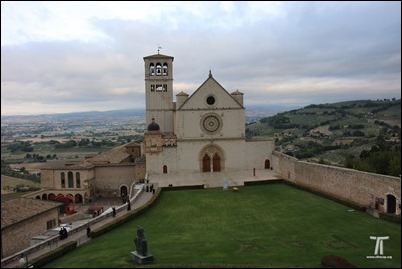

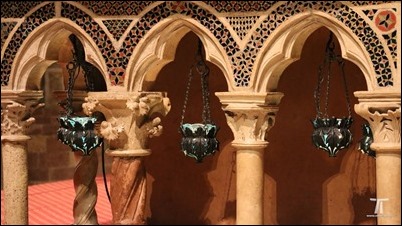
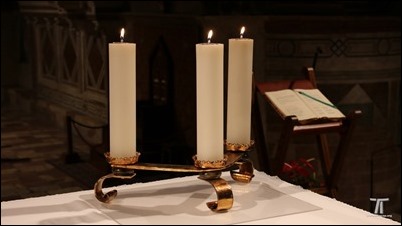

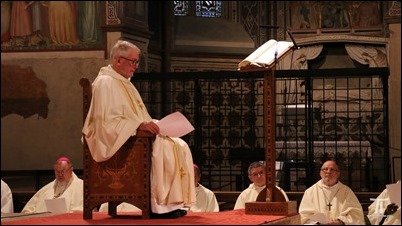



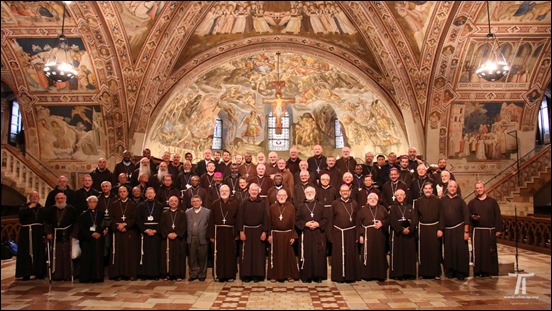
– – –
Next week, we will be holding our plenary meeting of the Pontifical Commission for the Protection of Minors, which will conclude Thursday with a meeting with the Holy Father. So, I will be remaining in Rome until then.
However, I want to say how much I’m looking forward to returning to Boston and attending our upcoming Celebration of the Priesthood dinner, which will be held Sept. 28 at the Seaport World Trade Center in Boston.
We are so grateful that Roma Downey has made herself available to come and speak to our guests there.
She recently sent along this video greeting to the Catholics of Boston that I would like to share with you:
Roma is a woman of the Church who has done so much to promote the message of the Church and family values through the use of mass media, such as her recent television series, The Bible. We look forward to welcoming her to Boston!
Until next week,
Cardinal Seán



